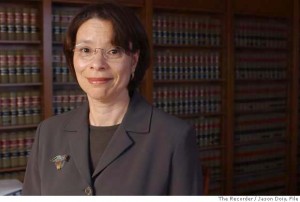 HOA Misses Deadline for CEQA Lawsuit on Halus Wind Turbine
HOA Misses Deadline for CEQA Lawsuit on Halus Wind Turbine
For the last half a year or so, the Heron Bay Homeowners Association has been threatening to sue the City of San Leandro if it approved the variance requested by Halus Power Systems to install a single wind turbine on an 80-foot tower on its property. Halus is on the business of refurbishing wind turbines and wants to be able to do on-site research and testing. The Zoning Code requires that a property owner get a variance to erect any structure over 60 ft of height.
Heron Bay is a planned community resting on the site of a former ammunition factory across the creek from the industrial area where Halus is located. It counts among its neighbors a PG&E substation, a salvage yard, a sewer water treatment facility and various industrial buildings. When built, the turbine will share the skyline with massive electrical transmission towers, cell phone towers and cranes.
The HOA’s objections to the turbine have ran the gamut from then-HOA President and now Council Member Benny Lee‘s argument that it would acerbate his wife’s migraines to the fact that it will cast a shadow over some Heron Bay homes after 8:30 AM on December 21st of every year. Their main complaint, however, has been that the turbine is “ugly”.
The California Environmental Quality Act (CEQA) requires cities to evaluate the potential substantial environmental effects of any project they are asked to approve. The main concern on this case was the potential danger the turbine might cause to the birds that inhabit or visit the nearby wetlands. Halus commissioned a study on this very subject from a premier environmental consulting firm with a lot of experience working on the San Leandro shore. It concluded that the turbine would pose only a minimal risk to birds (about one bird death every six years or so). The California Department of Fish and Wildlife suggested how to further minimize the dangers but otherwise had no objections to the project. The City carefully evaluated this and other potential environmental effects, and found there was no substantive evidence to suggest that any such effect would be substantial. It prepared a mitigated negative declaration to this effect. On February 7th, the Board of Zoning Adjustments approved the variance and on February 8th the City filed a Notice of Determination (NOD) with the County Clerk approving the project.
The Heron Bay HOA appealed the BZA decision to the City Council. On April 1st, the Council voted 5-1 in favor of the variance. The HOA, however, continues threatening a lawsuit, apparently not realizing that their chance had passed. Under CEQA (PRC §21167 (b)), any litigation “alleging that a public agency has improperly determined whether a project may have a significant effect on the environment” must commence within 30 days from the date the NOD is filed. That is to say, if the HOA wanted to challenge the City’s finding that there was no need for an Environmental Impact Report on this case, it had to file its lawsuit by March 10th. It did not, so it would seem that the HOA is out of luck.
It’s not surprising that the HOA missed that particular deadline. Throughout this process they were represented by an attorney that specializes in HOA law and not in CEQA law. That’s like asking your podiatrist for advice on heart problems. And this is a somewhat tricky legal matter. Normally, decisions by the BZA must be appealed to the City Council before they are ripe for litigation. And that’s true in this case of the BZA’s decision to grant Halus a height variance. The Heron Bay HOA can potentially challenge the variance decision in court, as long as it finds grounds to do it other than CEQA. It seems unlikely that they will, and they certainly will not be able to do it without first spending considerable amounts of money to document any actual harm they have incurred.
This is probably a blessing in disguise for the Heron Bay HOA, however. A relatively new law (PRC §21169.11) allows courts to impose sanctions of up to $10,000 for frivolous claims on the parties or attorneys that make them. Given the claims advanced so far by the HOA, a lawsuit could quickly empty their bank account – and their lawyer’s.
**Update**
Assistant City Attorney Jayne Williams responded to an inquiry from the San Leandro Patch on this matter with the following statement:
The Heron Bay HOA’s appeal to the City Council specifically challenged adoption of the Mitigated Negative Declaration (MND) and was timely filed. As a result, the first 30 day Statute of Limitation from the BZA actions stopped running. Following the April 1st City Council public hearing, the City filed the CEQA “Notice of Determination” for the appeal on Tuesday afternoon- April 2nd . Therefore, a new 30-day Statute of Limitations began to run for challenging the MND from the April 2nd date.
CEQA, however, does not have any provisions to stop the clock on the status of limitations. Indeed, Courts have repeatedly ruled that it starts running from the moment the project is initially approved. And the California Supreme Court has been stated very clearly that filing a NOD triggers a 30-day statute of limitation for any litigation to be filed, even if there are problems with the NOD. So far the Court has not carved any exceptions.
The Fifth District Court of Appeals, however, did recently find that when a Notice of Exemption (NOE) to CEQA is improperly filed prior to the project actually being approved, that notice is invalid and the statute of limitations does not start running. William’s argument might fit within this analysis, given that NOEs are quite similar to NODs. At the very least, it seems that if the Heron Bay HOA appeals, the City will not assert the statute of limitations as a defense.
Halus, however, may still chose to do so. After all, the Fifth District’s decision is not binding on the First District (ours) and there is concern among CEQA practitioners that it does not jive with the Supreme Court decision referred to above. Moreover, it is not at all clear that the City’s argument that the BZA’s approval of the project was not final, and that therefore the February NOD was improper, has merit. Without a specific ordinance codifying the CEQA appeals process, the nature of the City Council’s review is an open question.
However, given the City’s position, it may not behoove Halus to assert the status of limitations, as the law is murky enough on this matter that if Halus wins, the HOA could appeal turning this into an expensive legal battle. It would seem that responding to the suit on the merits could be a better strategy. After all, the “evidence” of environmental effects submitted by the HOA was so poor that it should not be difficult for Halus’ and the City’s attorneys to argue that both the HOA and its attorney should be sanctioned for making frivolous claims. CEQA provides for an objective test of what constitutes a frivolous claim and does not require bad faith, so the question the Court will entertain is whether a reasonable attorney – not the attorney actually representing the HOA – would believe the claim is totally without legal merit. If they press on their claim that a couple of hours of wind turbine shadows one day a year constitute a substantial environmental effect, I’m pretty sure the Court will not be amused at the waste of its valuable time.


 It’s worse than I thought, but is it intentional or just careless?
It’s worse than I thought, but is it intentional or just careless?
